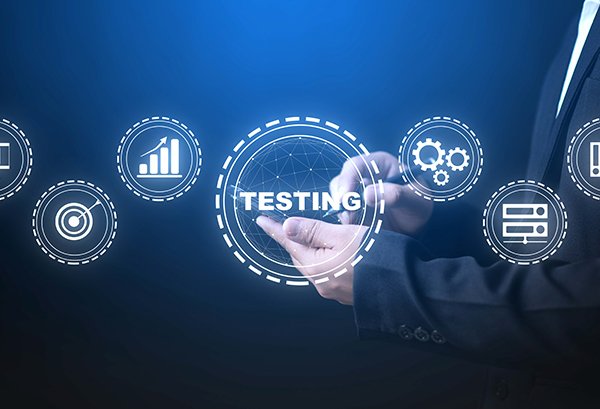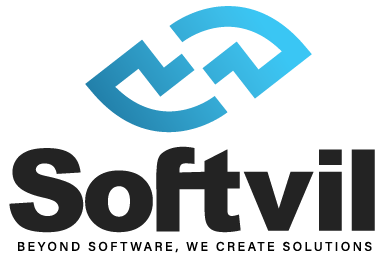Within the dynamic realm of software development, ensuring impeccable quality remains a pivotal pursuit, particularly evident among software companies in Sri Lanka and across the globe. The meticulous orchestration of software quality has transcended its conventional confines, becoming an integral thread woven throughout every phase of the development lifecycle. This article serves as a guiding compass through the intricate landscape of software quality within project management, shedding light on its paramount importance.
The symbiotic relationship between adept software quality practices and their far-reaching influence on cost-effectiveness and elevated performance cannot be overstated. By embracing established strategies, software companies in Sri Lanka and beyond can adeptly navigate risks while enhancing user satisfaction and the enduring value of their products. This discussion delves comprehensively into 10 proven strategies, encompassing facets like early testing, automation, quality controls, communication, adaptability, and forward-looking planning. In doing so, it offers readers an encompassing roadmap to attaining mastery in the art of software quality management.
Start Testing Early

Significance of Early Testing: Preventing Escalating Defects
Commencing testing at the earliest stages sets a strong foundation for achieving impeccable software quality. Early testing serves as a proactive measure to prevent defects from snowballing into complex issues. By identifying and rectifying glitches before they take root, the development team not only saves valuable time and resources but also ensures a smoother project progression. The ability to nip problems in the bud prevents them from permeating further stages, leading to more efficient development cycles.
Addressing Defects at Different Stages of Development
The impact of addressing defects varies across different stages of the development process. Detecting issues in the initial requirements and design phases leads to more precise development, saving significant effort later. Addressing defects during coding minimizes disruptions and avoids costly rewrites. In the testing phase, early defect detection reduces the likelihood of critical issues slipping through, enhancing the final product’s robustness. Waiting until post-release to address defects can be not only costly but also detrimental to user experience and reputation. Thus, a comprehensive testing approach right from the start ensures that software quality remains uncompromised at every juncture of development.
Embrace Automation

Benefits of Automated Testing: Enhanced Coverage and Accuracy
Automation has emerged as a powerful ally. Automated testing offers a range of benefits that contribute to superior software quality. Firstly, it significantly expands testing coverage by executing a large number of test cases swiftly, ensuring thorough examination of various scenarios. Secondly, automated tests are executed with precision, eliminating the potential for human errors that can occur during manual testing. The result is a higher degree of test accuracy and reliability, crucial factors for maintaining software excellence.
Differentiating Non-UI and UI Tests: Roles in Quality Maintenance
Two main categories of automated testing are non-UI and UI tests, each serving distinct roles in maintaining software quality. Non-UI tests focus on the backend, evaluating APIs, algorithms, and data structures. These tests ensure that the underlying functionality operates correctly, providing a solid foundation for the software. On the other hand, UI tests validate the user interface’s responsiveness, ensuring a seamless user experience. Balancing both non-UI and UI tests guarantees a comprehensive evaluation of the software, enhancing its overall quality and performance. Embracing automation empowers software companies to streamline testing efforts, leading to robust products that excel in the market.
Implement Quality Controls

Collaborative Involvement of Testers and Developers: Ensuring Comprehensive Quality
The implementation of quality controls in software development necessitates seamless collaboration between testers and developers. By involving testers from the outset, the development team gains a fresh perspective on potential defects and challenges. Testers can identify issues early, allowing developers to address them promptly, thus preventing the amplification of problems down the line. Collaborative efforts foster clear communication, ensuring that both parties understand the project’s requirements and objectives. This proactive partnership enhances software quality by identifying and rectifying issues throughout the development journey.
Enforcing Quality Standards from Project Inception: A Prerequisite for Excellence
Quality standards serve as the backbone of software development projects. From the very beginning, establishing and adhering to these standards sets a benchmark for the expected level of quality. This approach guides the entire team, from design to deployment, in consistently producing high-quality code and functionality. Quality standards encompass coding conventions, documentation practices, and testing procedures. By integrating quality standards into the project’s foundation, software companies can minimize errors, promote consistency, and ultimately deliver a product that meets or exceeds user expectations. Such implementation ensures that software quality is upheld as a fundamental principle throughout the entire development lifecycle.
Foster Communication

Clear Communication Among Stakeholders: A Cornerstone of Success
Effective communication lies at the heart of successful software development projects, especially for software companies in Sri Lanka and worldwide. Clear and open communication among stakeholders, including developers, testers, project managers, and clients, is essential for achieving software excellence. Transparent communication ensures that everyone understands project goals, requirements, and expectations. It fosters an environment where concerns and insights are shared, preventing misunderstandings and potential roadblocks. By maintaining a steady flow of information, software companies can swiftly address issues and adapt to changes, ultimately contributing to higher software quality.
Consistent Key Performance Indicators (KPIs): Aligning the Team’s Focus
Incorporating consistent Key Performance Indicators (KPIs) into the communication process is pivotal for keeping the entire team aligned towards quality objectives. KPIs provide tangible metrics to measure progress and success. They act as benchmarks, guiding the team’s efforts towards meeting quality standards and project milestones. For software companies in Sri Lanka, well-defined KPIs create a shared understanding of software quality expectations, fostering a sense of accountability and ownership. Regularly assessing KPIs ensures that the team remains on track, making informed decisions to enhance software quality throughout the project’s lifecycle.
Plan for Change

Challenges of External Factors on Software Quality
In the ever-evolving landscape of software development, external factors like hardware compatibility, operating systems, and browser updates can exert significant influence on software quality. Adapting to these variables poses challenges, as failure to address them can lead to compromised user experience and functionality. Recognizing these challenges is vital for software companies to proactively safeguard software quality.
Continuous Monitoring Against External Variables
To maintain software quality despite external variables, a concept of continuous monitoring is indispensable. This involves systematically tracking changes in the external environment and assessing their impact on software functionality. By regularly testing software against various combinations of external factors, software companies ensure that their products remain robust and responsive. This approach not only identifies vulnerabilities promptly but also empowers development teams to make informed adjustments to code and features. In essence, a proactive stance towards external variables strengthens software quality, fostering reliability and user satisfaction in a dynamic software ecosystem.
Create Products, Not Projects

Shifting Mindset Towards Adaptable Products
The paradigm of software development is evolving from project-oriented to product-focused approaches. Embracing this shift means viewing software not as finite projects but as living products that evolve with user needs and technological advancements. This mindset change emphasizes continuous improvement and adaptability, fostering software excellence beyond the project’s completion.
Ensuring Sustained Quality and Adaptability
When software companies adopt the “products, not projects” mindset, sustained software quality and adaptability become inherent. This approach allows for iterative development, enabling incremental enhancements that align with user feedback and market demands. Continuous testing and refinement ensure that software maintains optimal performance and usability over time. Moreover, this strategy anticipates changing user requirements and external variables, minimizing disruptions and enhancing user satisfaction. By building adaptable products, software companies create a competitive edge, delivering solutions that not only meet current needs but also future-proof against evolving challenges. This transformative approach guarantees software quality that stands the test of time.
Prioritize Long-Term Thinking

Significance of Core Elements
Prioritizing long-term strategies involves emphasizing key aspects like architecture, design, coding standards, and peer reviews. A robust architecture ensures scalability and maintainability. Meticulous design results in user-centric interfaces and efficient workflows. Enforcing coding standards enhances code reliability, while peer reviews catch issues early, leveraging collective expertise.
Enhancing Software Quality
Embracing long-term strategies profoundly enhances software quality. By addressing foundational elements, software companies prevent the accumulation of technical debt. Thoughtful design prevents usability flaws, and standardized coding fosters reliability. Peer reviews unearth latent issues, ensuring comprehensive quality control. This strategic approach fortifies software against evolving challenges, delivering enduring excellence.
Manage Risks

Concept of Risk Register
A risk register is a pivotal tool in risk management that systematically identifies, evaluates, and mitigates potential risks in software development. It serves as a central repository, ensuring transparency and accountability for risk-related decisions.
Risk Identification, Assessment, Mitigation
The risk management process involves three crucial steps. Firstly, risks are identified, categorizing potential issues and their impact. Next, risks are assessed, considering their probability and potential consequences. Lastly, mitigation strategies are formulated, outlining how to alleviate or eliminate identified risks. The risk register guides this process, aiding software companies in anticipating challenges and proactively addressing them, ultimately fortifying software quality and project success.
Outline Deliverables

Importance of Project Goals and Deliverables
Clear project goals and well-defined deliverables are foundational for software development success. They provide a roadmap, ensuring that the development team and stakeholders share a common vision. Precise deliverables clarify expectations, reducing ambiguity and enhancing project focus.
Alignment of Resources and Time
Outlining deliverables is essential in aligning resources and time effectively. With defined goals, teams allocate resources strategically and set realistic timelines. This prevents scope creep and ensures that efforts remain targeted on achieving software excellence. Deliverables act as checkpoints, facilitating progress tracking and adjustment if needed. Ultimately, outlining deliverables serves as a guiding compass, leading software companies towards delivering on promises and upholding software quality.
Learn and Improve

Value of Continuous Improvement
The essence of software excellence lies in embracing a culture of continuous improvement. Regular reviews and revisions are the cornerstones of this journey, allowing teams to refine processes, identify bottlenecks, and enhance overall efficiency. By consistently seeking ways to optimize workflows, software companies foster an environment of growth and innovation.
Learning from Past Projects
Drawing insights from past projects is a goldmine for elevating software quality. Analyzing successes and setbacks provides invaluable lessons that shape future endeavors. The mistakes made become stepping stones to avoid pitfalls, while successes inspire best practices. This cumulative knowledge leads to refined strategies, more streamlined workflows, and ultimately, software that embodies the culmination of experience and improvement.
Conclusion
In the intricate landscape of software development, the strategies elucidated above stand as guiding beacons for software companies in Sri Lanka and beyond. These tried-and-true approaches bear the potential to transform projects into cost-effective, high-performing endeavors. By prioritizing early testing, automation, quality controls, communication, adaptability, and long-term strategies, software excellence becomes an achievable goal. The dynamic interplay of these strategies ensures robustness, adaptability, and a superior user experience. As the technology landscape evolves, these principles remain steadfast, enabling software companies to navigate challenges and deliver remarkable solutions. Encouraging readers to embrace these strategies, this article beckons software companies to embark on a journey towards achieving software excellence, forging a path that transcends challenges and ultimately results in unparalleled success.

